AP Biology Unit 6 - Biotechnology
1/86
There's no tags or description
Looks like no tags are added yet.
Name | Mastery | Learn | Test | Matching | Spaced |
|---|
No study sessions yet.
87 Terms
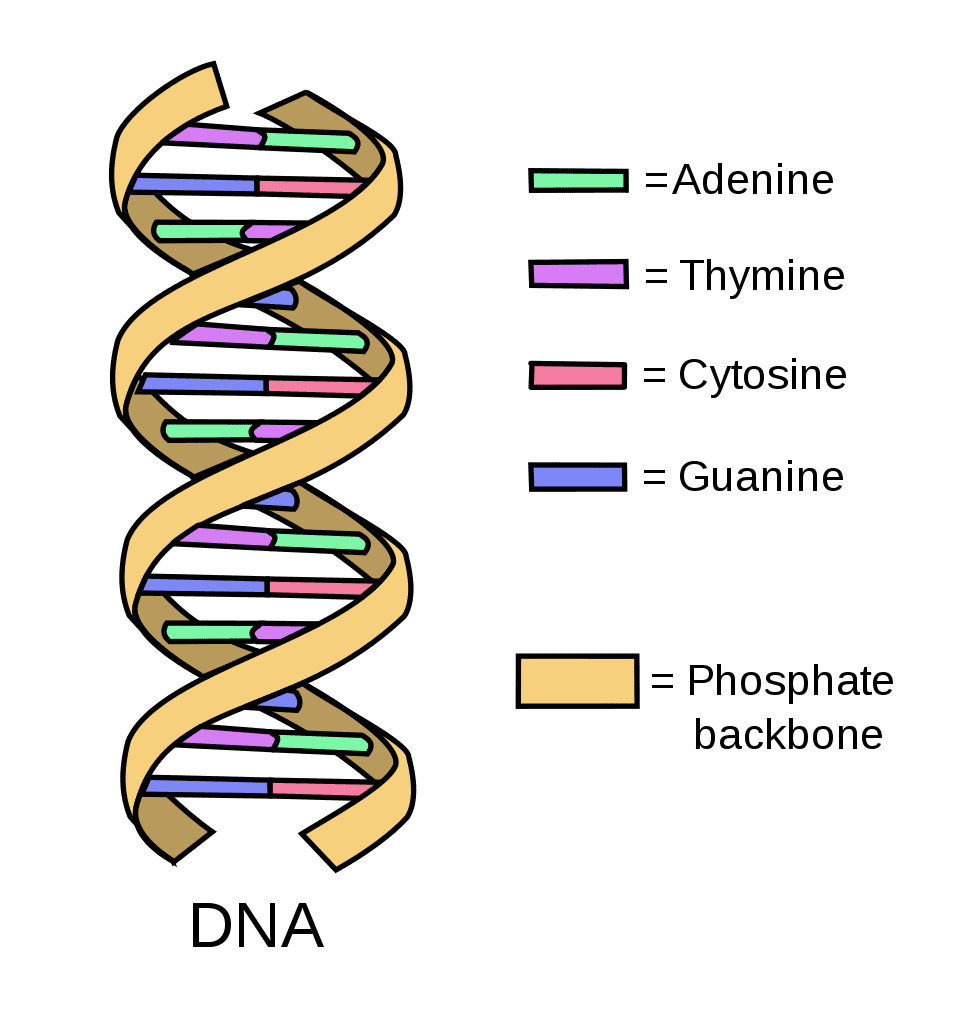
DNA (Deoxyribose Nucleic Acid)
Source of heritable information in cells, which is made out of nucleotides (phosphate, sugar, base); adenine & thymine pair with two hydrogen bonds, cytosine & guanine pair with three hydrogen bonds
DNA directionality
Two antiparallel DNA strands with a 5-prime end and phosphate terminus group, opposite to a 3-prime end and hydroxyl terminus group
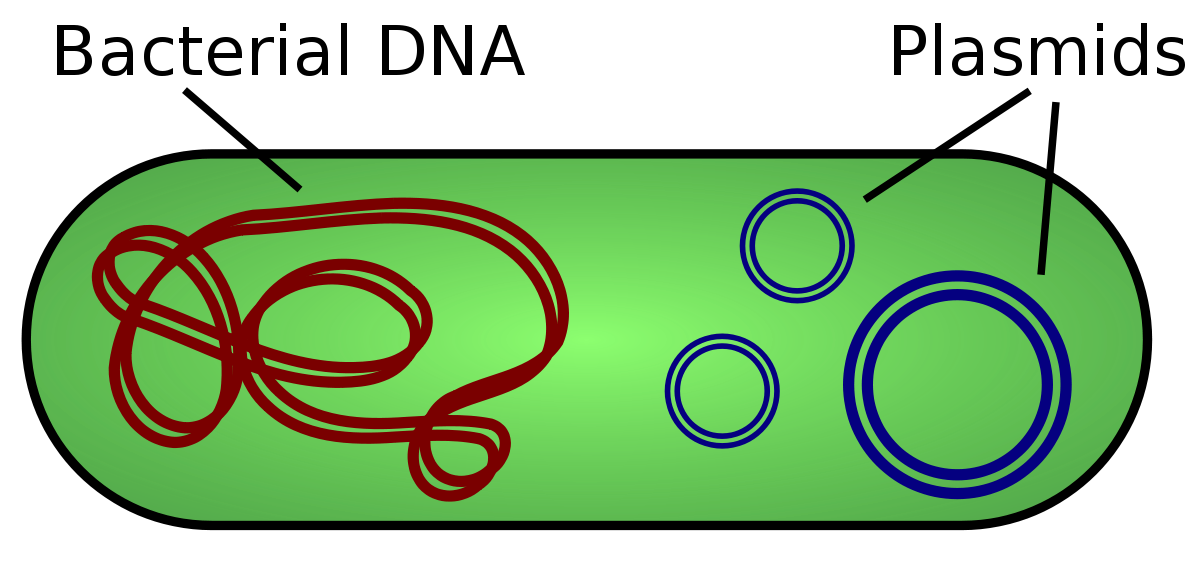
Plasmids
small extra-chromosomal, double-stranded, circular DNA molecules
Heritable Information in Prokaryotes
DNA is stored in circular chromosomes, genomes are smaller, and plasmids are found in the cytosol
Heritable Information in Eukaryotes
DNA is stored in multiple, linear chromosomes, genomes are larger, and plasmids are found in the nucleus
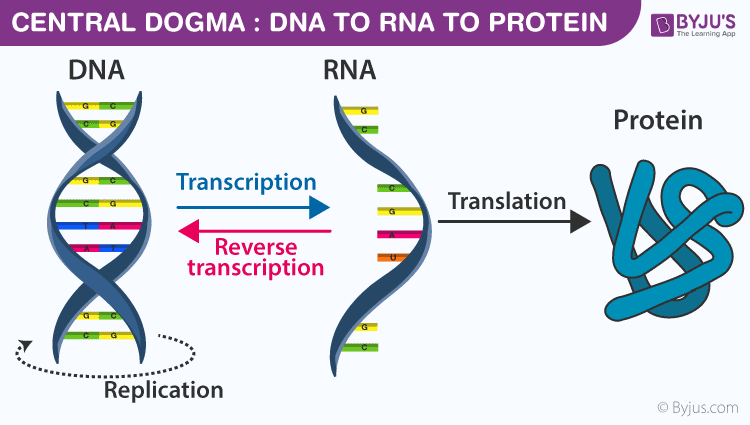
Central Dogma
The flow of genetic information from DNA to RNA to proteins, which involves the processes of Replication, Transcription, and Translation
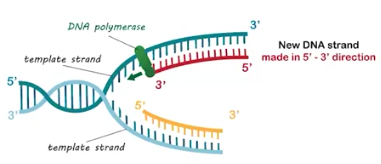
DNA Replication
The semi-conservative process of producing two identical copies from one DNA molecule, which involves four enzymes and five steps

Why is the replication process considered semi-conservative?
Each DNA molecule contains one original strand, which is used as a template, and a newly synthesized complement half; it helps prevent mutations
Which direction does replication occur"?
5’-3’ direction
Replication Fork
Location where the two DNA strands are separated
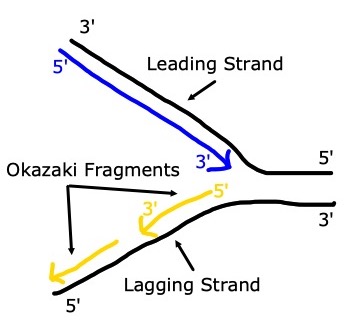
Leading Strand
One long strand of DNA that will always be synthesized continuously

Lagging Strand
One strand that will always be synthesized discontinuously and in fragments; create okasagi fragments
Okasagi Fragments
Short sequences of nucleotides that are later linked by DNA ligase to form the lagging strand
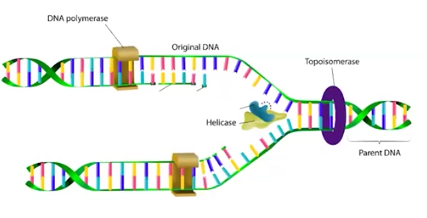
1# Step of Replication: Helicase
An enzyme that initiates replication and unwinds the DNA helix
2# Step of Replication: Topoisomerase
An enzyme that relaxes the supercoil at the replication fork and causes the DNA to unzip
3# Step of Replication: Need for RNA Primer & Primase
RNA primer is synthesized by primase, which initiates synthesis and the process of the nucleotides binding to the unzipped DNA strand
4# Step of Replication: DNA polymerase
An enzyme that removes the RNA and synthesizes new DNA strands in a 5’-3’ direction by attaching to the 3’ end of the template strand, and also checks the new strands
5# Step of Replication: Ligase
An enzyme that retwists the two DNA strands into a double helix and joins the okasagi fragments on the lagging strand
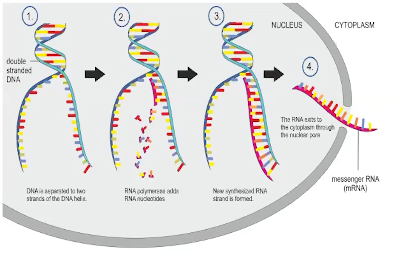
RNA Transcription
The process of copying a segment of DNA into RNA in the nucleus, which is initiated by RNA polymerase and synthesizes mRNA in a 6-step process
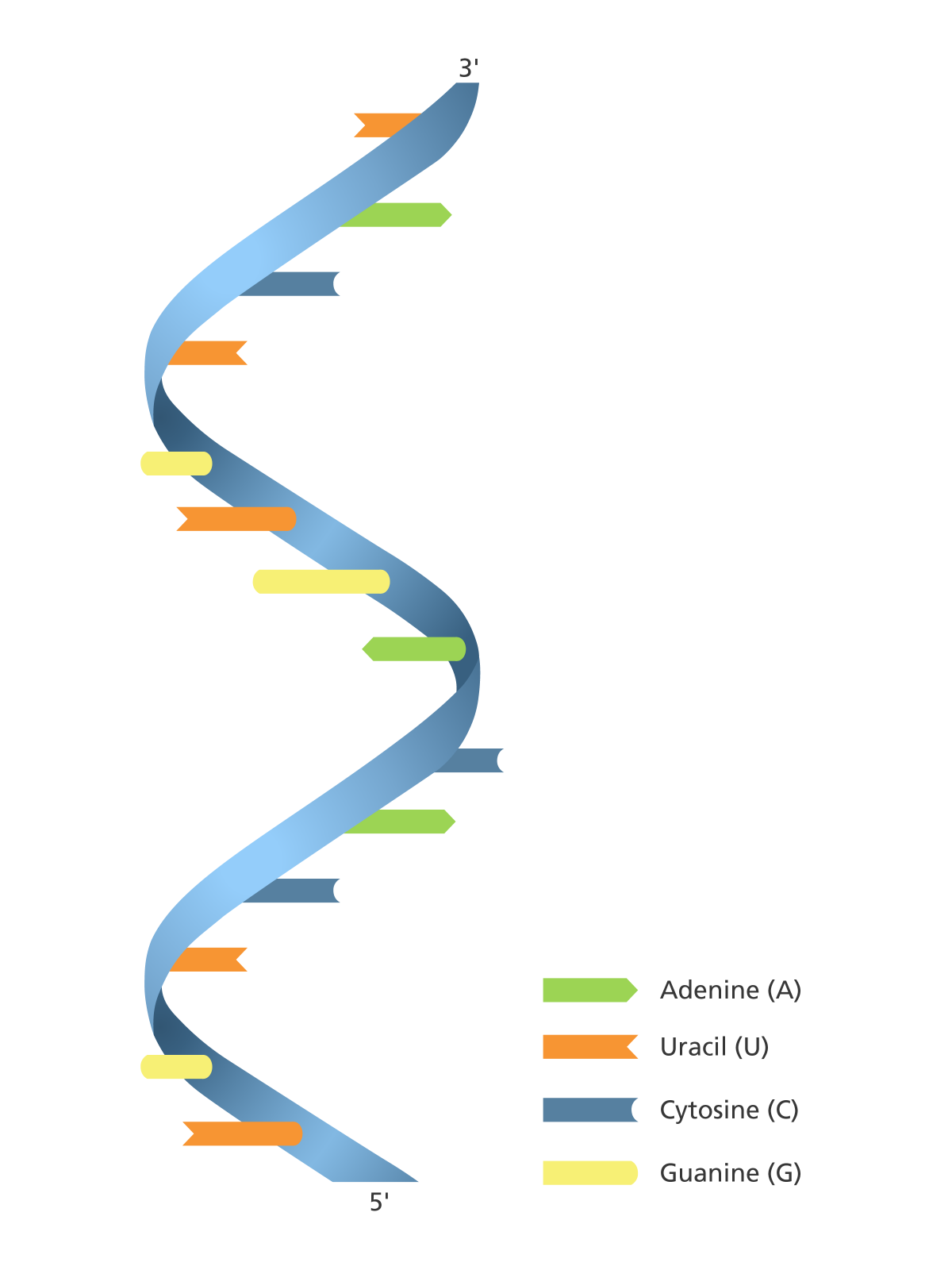
RNA
Single-stranded ribonucleic acid that controls the synthesis of proteins and is composed of nucleotides (phosphate, sugar, base); adenine binds with uracil, cytosine binds with guanine
One strand
Template/ non-coding/ antisense strand
Other strand
Non-template/ coding strand; where the gene targeted for transcription is
RNA polymerase
An enzyme that joins with transcription factor proteins to form a transcription initiation complex that synthesizes Messenger RNA (mRNA) in the 5’-3’ direction by reading the template strand in the 3’-5’; the synthesized mRNA molecule is the transcribed copy of the gene on the coding strand
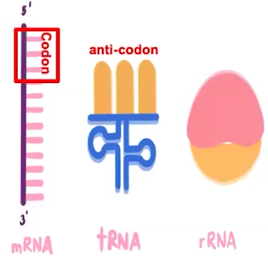
Messenger RNA (mRNA)
A type of RNA that has the function of carrying genetic information from DNA to the ribosomes for protein synthesis
Codon
A three-base sequence on mRNA
#1 Step of Transcription
RNA polymerase untwists the DNA and initiates transcription by binding with transcription factor proteins
#2 Step of Transcription
RNA polymerase unzips DNA, creating the transcription bubble (term for the transcription form of the replication fork)
#3 Step of Transcription
RNA polymerase adds free RNA nucleotides, which base pair with the DNA template strand
#4 Step of Transcription
RNA nucleotides bond together at the backbone
#5 Step of Transcription
The new single-strand RNA detaches from the DNA template, and heads to the ribsomes
#6 Step of Transcription
RNA polymerase re-zips and twists the DNA
RNA Processing
In eukaryote cells, the maturation of the primary mRNA transcript through enzyme-related changes and the excision of introns and retention of exons
Poly-A Tail
An enzyme-regulated modification of 100-200 adenine nucleotides that increases the stability of mRNA transcript and helps with exporting mRNA from the nucleus
GTP cap
An enzyme-regulated modification of a guanine nucleotide that protects the mRNA transcript and helps ribosomes attach to mRNA
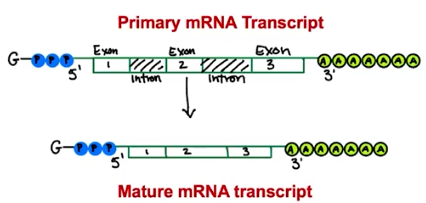
Introns
Sequences of mRNA transcript that do NOT code for amino acids; are removed during RNA processing and not included in the mature mRNA transcript
Exons
Sequences of mRNA transcript that code for amino acids; they are retained during RNA processing, and different exons are connected in the mature mRNA transcript
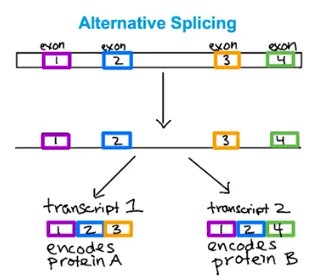
Alternative Splicing
The process of splicing introns and connecting retained exons in the mature mRNA transcript that results in different proteins due to different mRNA transcript variations
Translation
The process of translating the genetic information carried by mRNA into a sequence of amino acids during protein synthesis, that involves three steps
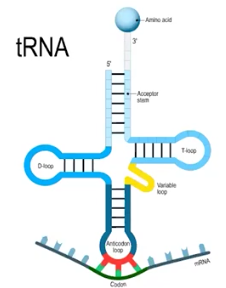
Transfer RNA (tRNA)
A type of RNA that has the function of helping ribosomes create a specific polypeptide sequence, as directed by mRNA
Anticodon
A three base sequence on tRNA, whose correct base pairing with mRNA codons releases an amino acid to a growing polypeptide
Ribosomal RNA (rRNA)
A type of RNA that is a functional unit of ribosomes and is responsible for protein assembly; it creates primary polypeptides as tRNA releases amino acids
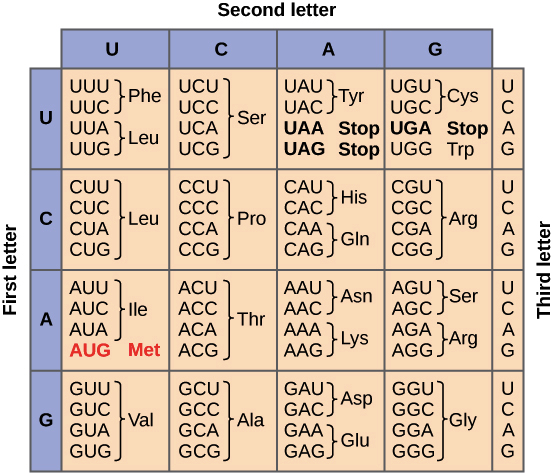
mRNA Codon Chart
A chart that can be used to determine which codon encodes for each of twenty amino acid
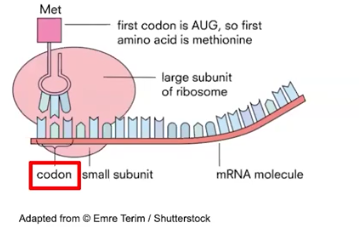
#1 Step of Translation: Initiation
The tRNA anticodon matches with the mRNA codon. Following the instructions of the mRNA codon, the tRNA brings the correct amino acid to the correct place and forms peptide bonds
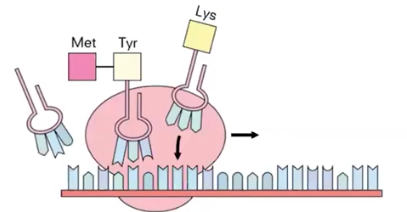
#2 Step of Translation: Elongation
tRNA brings amino acids, while rRNA adds the amino acids and contributes to a growing polypeptide chain
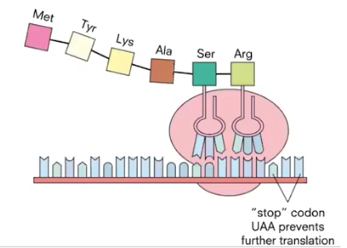
#3 Step of Translation: Termination
Amino acids continue being added to the growing polypeptide until one of three STOP codons is reached, which terminates translation and releases a newly synthesized polypeptide chain
Order of Transcription & Translation in Prokaryotes
Translation occurs simultaneously with Transcription
Reverse Transcriptase
An enzyme that copies viral RNA into VIral DNA and integrates it into the host DNA, which is then transcribed and translated, resulting in the assembly of a new viral progeny
Mutations
The primary source of genetic variation; Changes in the genome of an organism that can have a positive, negative, or neutral effect depending on the effect of resulting nucleic acid, proteins, or phenotypes
Causes of Mutations
DNA mutations can occur from errors in DNA replication, errors in DNA repair, radiation, and reactive chemicals
If chromosomes don’t separate properly during cell division (mitosis or meiosis), organisms can have a faulty amount of chromosomes, causing Triploidy (negative), polyploidy (positive), or intersexuality
Environmental factors: radiation, chemicals, infectious agents

Point Mutation/ Substitution
A mutation causing the replacement of a single base nucleotide with another
Missense Mutation
Term for when a substitution changes the amino acid
Silent Mutation
Term for when a substitution does not change the amino acid

Nonsense Mutation / Premature Stop
Term for when a substitution changes an amino acid to a stop codon

Insertion
A mutation when one or more base pairs are added to a sequence

Deletion
A mutation where one of more base pairs are deleted from a sequence

Codon Deletion or Insertion
The result of an insertion or deletion mutation; when a whole amino acid is added or one is missing from the mutated protein

Frame Shift
When a deletion or insertion results in a different base pair being the beginning of the next codon, shifting it over, changing the whole sequence of amino acids
Regulatory Sequences
Stretches of DNA that can be used to promote or inhibit protein synthesis and along with regulatory proteins, control transcription
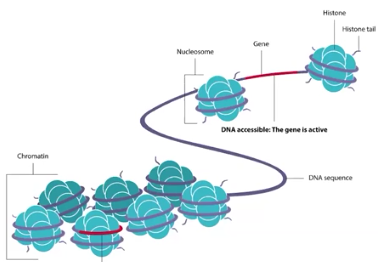
Epigenetic Changes
Reversible DNA modifications or histones that regulate genetic expression
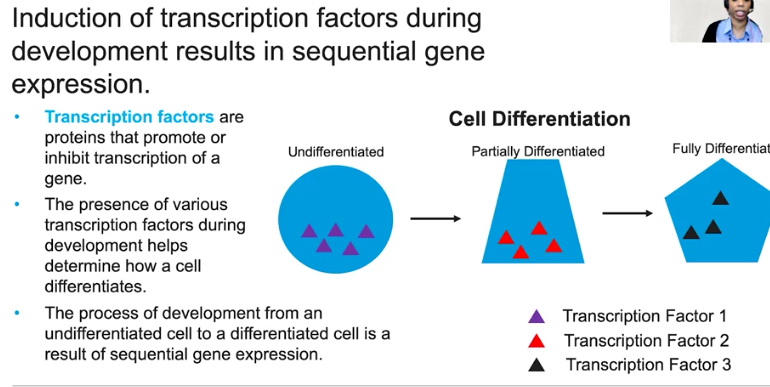
Cell Differentiation
Cells within the same organism that exhibit different phenotypes
Transcription Factors
Proteins that promote or inhibit the transcription of genes, whose presence, in a large amount, helps determine how cells differentiate
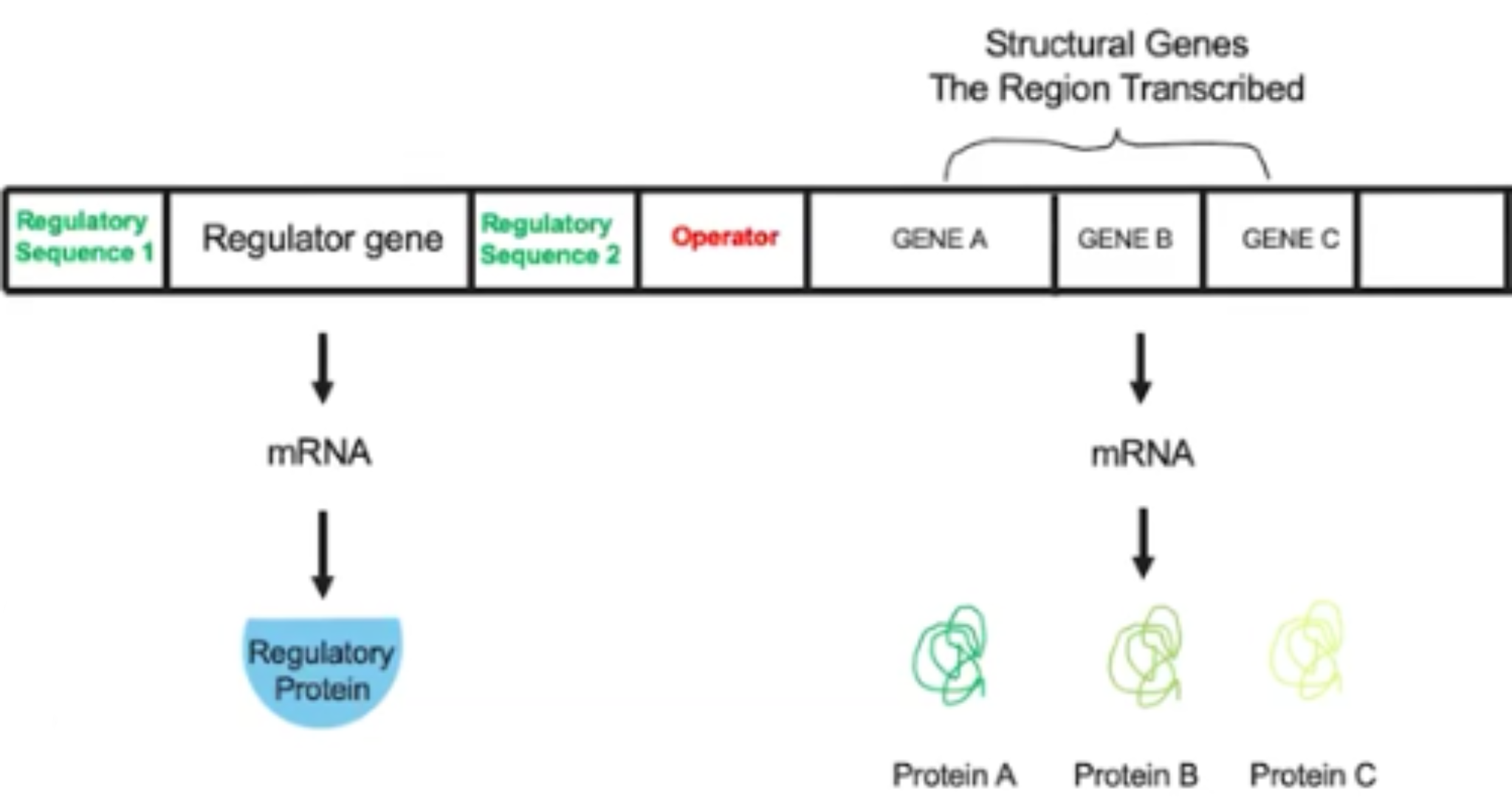
Operons
Closely linked genes that, during transcription, produce a single mRNA molecule and consist of the genes to be transcribed, the regulatory sequence, and the operator

Promoter
A DNA sequence arranged before before the transcription start site, where RNA polymerase and transcription factors bind to initiate transcription

Operator
A DNA sequence that either inhibits or promotes transcription through binding with regulatory proteins

Terminator
A DNA sequence arranged at the end of the operon which marks the termination of transcription
Which direction does the RNA polymerase move in?
3’-5’

Repressor Protein
A protein that can turn off or repress gene expression by binding to the operator
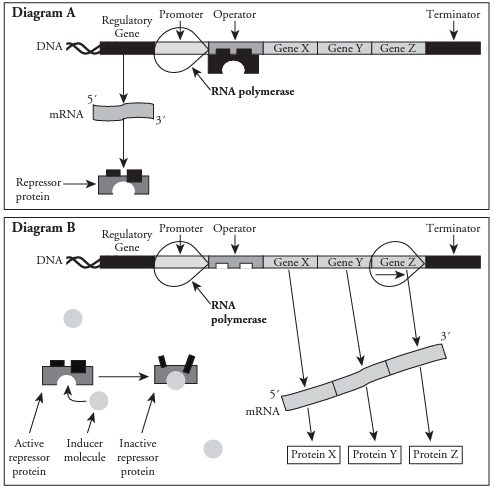
Inducible Operon
A type of negative gene control where an inducer binds to an active repression protein, inactivating it and turning on transcription
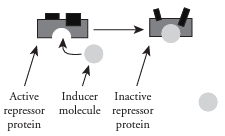
Inducer Molecule
A molecule that disables repressor proteins by binding with it and changing its shape, which allows for transcription
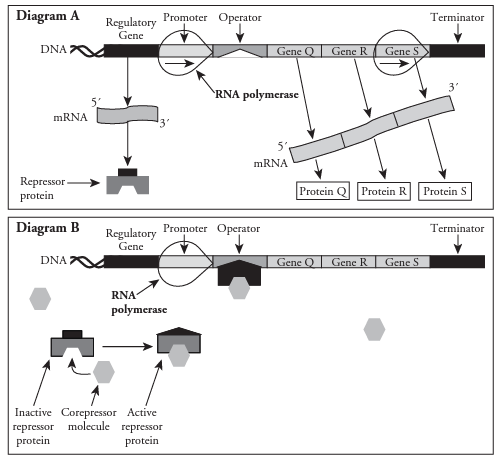
Repressible Operon
A type of negative gene control where a corepressor binds to an inactive repressor protein, activating it and turning off transcription
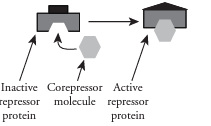
Corepressor
A molecule that activates repressor proteins by binding with it, and turns off transcription
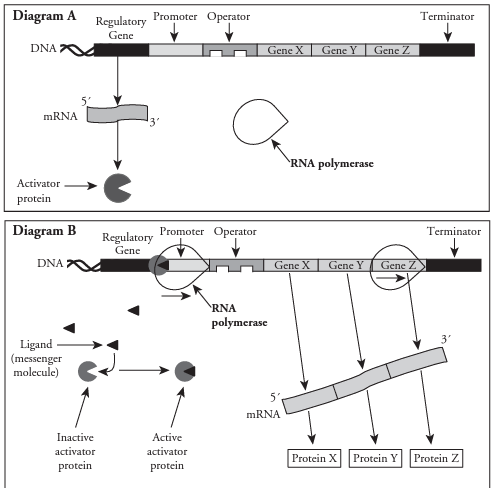
Positive Control of a Gene
A type of gene expression regulation where an activator protein binds to a promoter and increases the rate of transcription
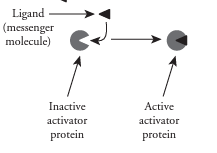
Activator protein
A protein that binds to the promoter and increases RNA polymerase activity, increasing the rate of transcription; it is activated by binding to a ligand messenger
Biotechnology
Techniques used to analyze or manipulate DNA and RNA
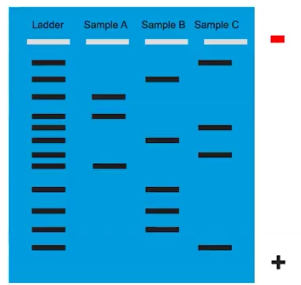
Gel Electrophoresis
The separation of DNA molecules according to size and shape by using a gel and creating negative and positive ends; Since DNA is negatively charged, fragments move to the positive end of the gel and smaller particles move faster and further. Small particles are marked by bands, whose patterns can be used to identify people
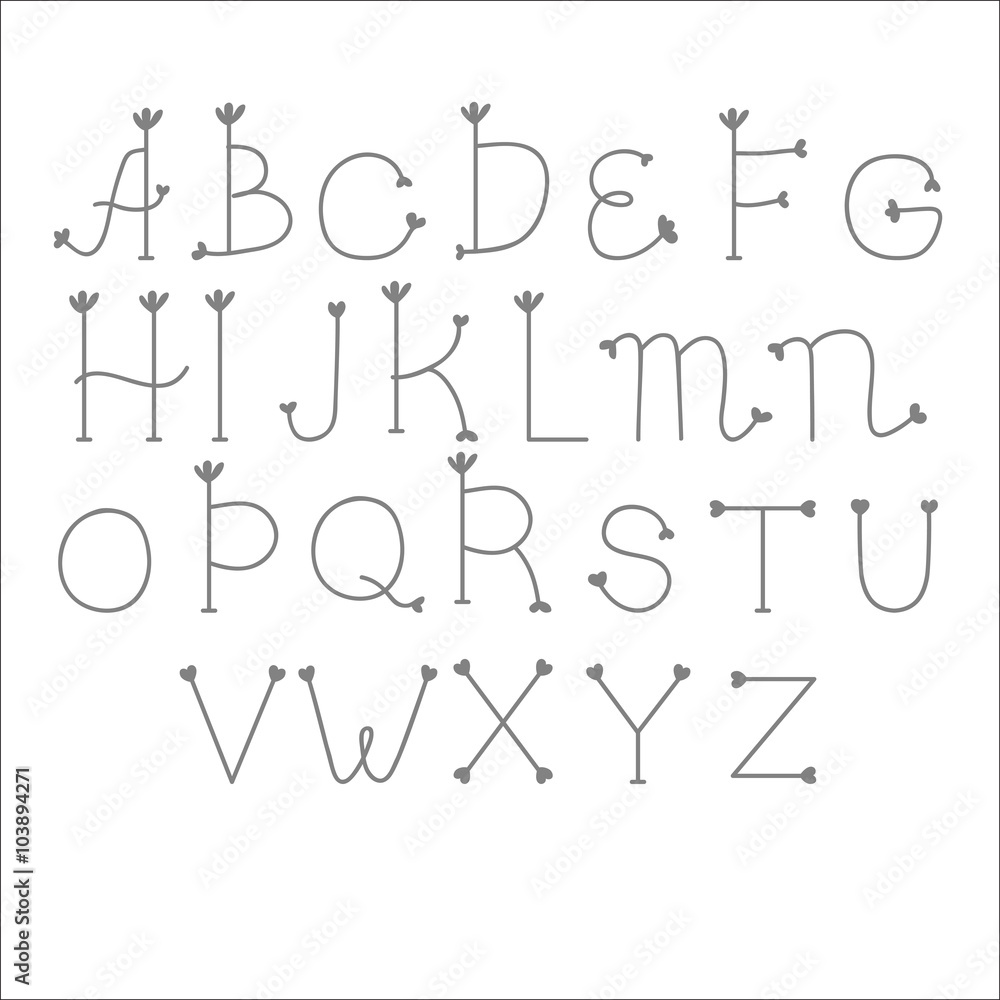
Polymerase Chain Reaction (PCR)
Technique used to create large samples of DNA when small samples are initially available; includes the steps of DNA denaturation, addition of primers, DNA replication, and repetition until a sufficient amount of DNA is collected
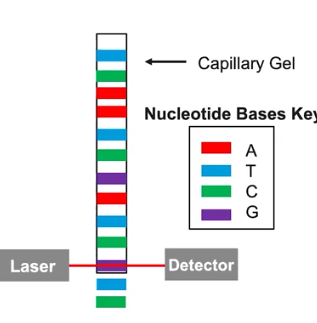
DNA Sequencing
Technique used to establish the order of nucleotides in a DNA strand, that is important in evolutionary biology, medicine, and forensics; nucleotides are labeled with fluorescent dye or DNA is run through a capillary gel, which detects and reads the sequence
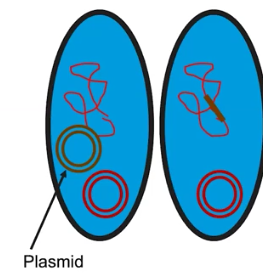
Bacterial Transformation
A process where bacterial cells take up foreign DNA from external sources and incorporate it into the bacterial chromosome or allow it to exist separately in the cytosol; scientists can introduce foreign DNA to make medicine and modify or amplify food
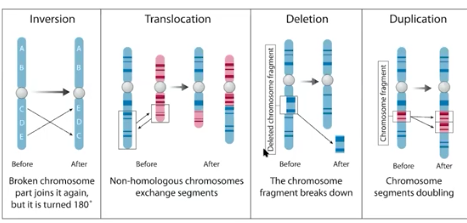
Horizontal Acquisitions of Genetic Information
Exchanges of genetic information between different genomes or unrelated organisms, which occurs in prokaryotic cells
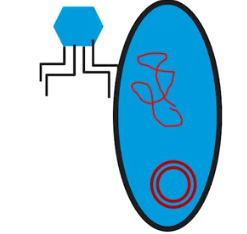
Transduction
The transmission of foreign DNA into a cell when viral genome integrates with the host genome
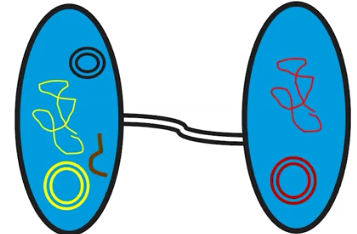
Conjugation
The cell-to-cell transfer of DNA that exchanges small segments of DNA and is facilitated by an external cell extension, that connects the cells
Transposition
The movement of DNA segments between and within DNA molecules

Virus
A small agent that infects cells and requires a host cell to reproduce; contains a genome of DNA or RNA that is covered in a Capsid, protein coat, and sometimes an outer phospholipid envelope
How do viruses use a host cell to reproduce?
Viruses infect cells by binding to their surface, inserting their genetic material, and hijacking the cell to produce more viruses. They use the cell’s biochemical machinery to replicate, transcribe, and translate their genome
Retroviruses
Viruses whose replication makes use of reverse transcriptase
Lytic Pathway
An infection pathway where the phase replicates in the bacterial cell, leading the cell to burst or lyse; is caused by stress, such as exposure to ultraviolet light or poor nutrients
Lysogenic Pathway
An infection pathway where the phage integrates its DNA into the genome of the bacterial cell